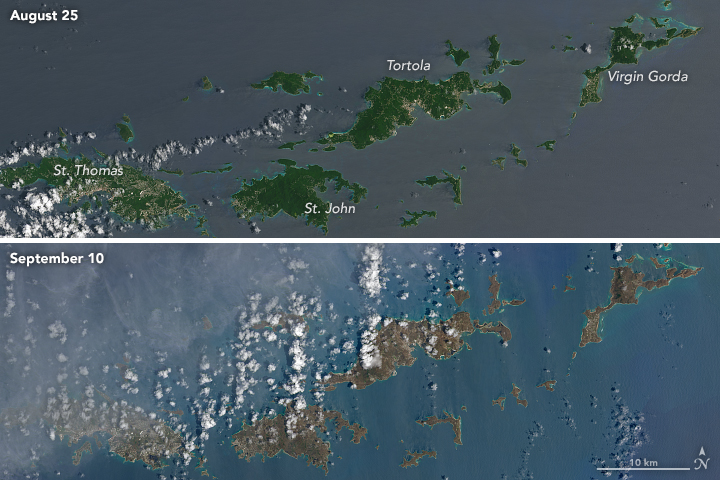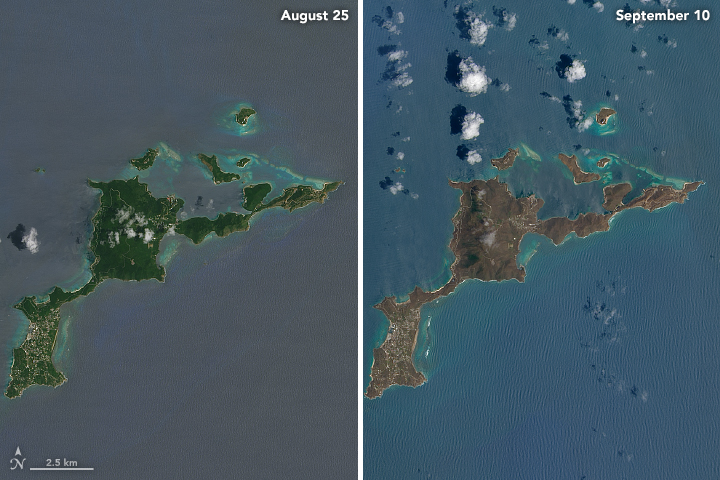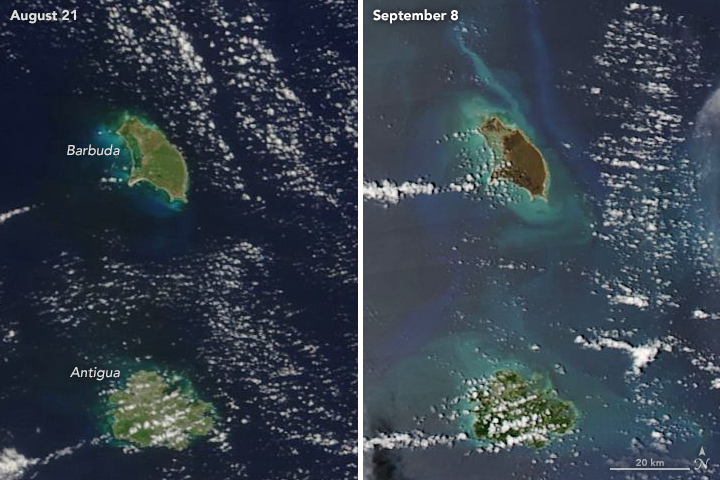NASA




Hurricane Irma churned across the Atlantic Ocean in September 2017, battering several Caribbean islands before moving on to the Florida Keys and the U.S. mainland. As the clouds cleared over places like the Virgin Islands, the destruction became obvious even from space.
These natural-color images, captured by the Operational Land Imager (OLI) on the Landsat 8 satellite, show some of Irmas effect on the British and U.S. Virgin Islands. The views were acquired on August 25 and September 10, 2017, before and after the storm passed. They are among the few relatively cloud-free satellite images of the area so far.
The most obvious change is the widespread browning of the landscape. There are a number of possible reasons for this. Lush green tropical vegetation can be ripped away by a storms strong winds, leaving the satellite with a view of more bare ground. Also, salt spray whipped up by the hurricane can coat and desiccate leaves while they are still on the trees.
Irma passed the northernmost Virgin Islands on the afternoon of September 6. At the time, Irma was a category 5 storm with maximum sustained winds of 185 miles (295 kilometers) per hour. According to news reports, the islands saw significant devastation.

A close-up of Virgin Gorda gives a better sense of the changes. Note how some of the vegetation on the south and west of the island is a bit greener, likely because it was partly shielded from winds by the hills in the center. Differences in ocean color likely stem from differences in the ocean surface; rougher surfaces scatter more light, and appear brighter and lighter.

The destruction is also clearly visible on Barbuda. This small island in the eastern Caribbean was directly hit by the category-5 storm early on September 6. These images were acquired by the Moderate Resolution Imaging Spectroradiometer (MODIS) on NASAs Terra and Aqua satellites. The left image shows Barbuda on August 21, 2017. The right image shows the ravaged landscape on September 8.
In contrast, vegetation on Antigua appears relatively healthy and intact. With the storms center passing to the north, the island sustained less damage. Ground reports noted that by September 7, electricity had been restored to most of the island, and the international airport reopened.
